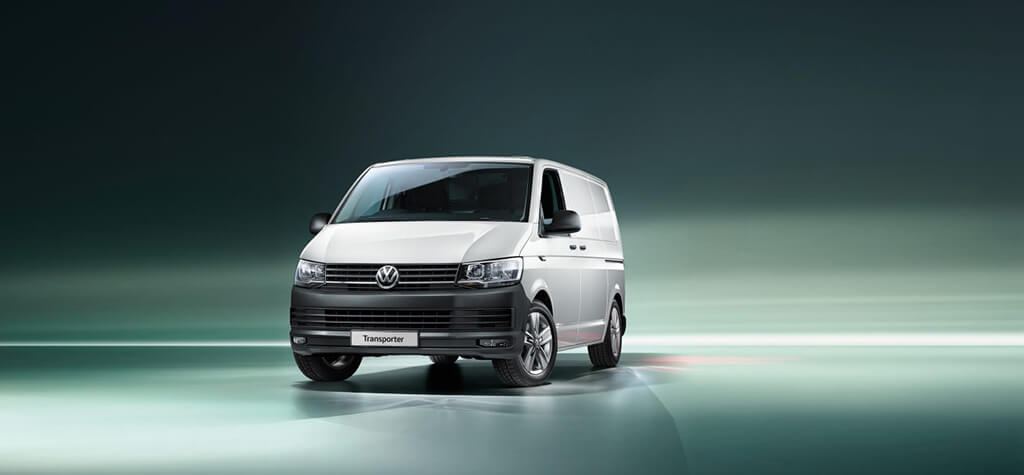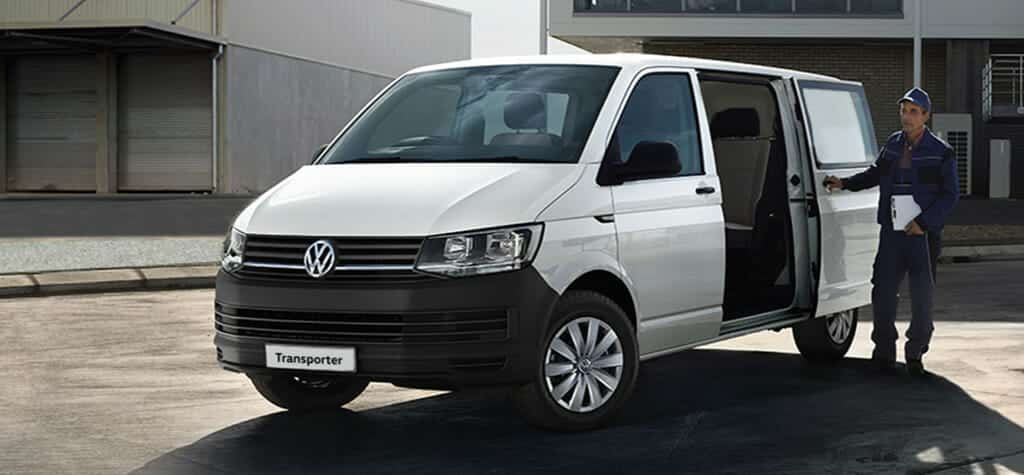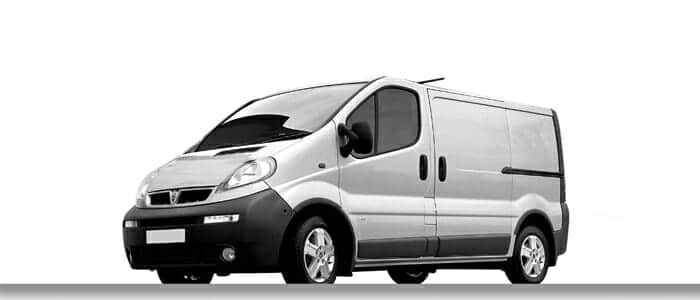
2026 Volkswagen Transporter Refrigerated Van Review – The Ultimate Buying Guide
The Volkswagen Transporter has long been a staple in the commercial vehicle world, renowned for its versatility, reliability, and iconic design. As we look ahead to the 2026 model year, the Transporter continues to evolve, building on the T7 platform introduced in 2025. This iteration brings refinements in efficiency, technology, and adaptability, making it an excellent base for specialised conversions like refrigerated vans. When equipped for temperature-controlled transport, the 2026 Volkswagen Transporter refrigerated van excels in sectors such as food delivery, pharmaceuticals, and perishable goods logistics. Its robust build, combined with modern powertrains including diesel, plug-in hybrid, and full electric options, ensures it meets the demands of businesses prioritising sustainability and performance.
This review explores the Transporter’s capabilities as a refrigerated van, drawing from its core strengths in load space, engine efficiency, and advanced features. Services like those from Glacier Vehicles elevate the base model through expert conversions, incorporating high-quality refrigeration systems to maintain precise temperatures. Whether you’re a small business owner handling daily deliveries or managing a larger fleet, the 2026 Transporter offers a blend of practicality and innovation that stands out in a competitive market. We’ll delve into its refrigeration performance, cargo handling, running costs, and more, providing a comprehensive guide to help you assess if this van fits your operational needs.
2. Quick Comparison Table
| Feature | 2026 Volkswagen Transporter Refrigerated Van |
|---|---|
| Payload Capacity | Up to 1,200 kg |
| Temperature Range | Chilled: +5°C to Frozen: -25°C, with multi-zone options |
| Fuel Type | Diesel, Plug-in Hybrid (PHEV), Electric |
| Transmission | 6-speed Manual / 7-speed Automatic / eCVT (PHEV/EV) |
| MPG (Fuel Economy) | 35-40 MPG (diesel) / Up to 200-mile range (EV) |
| Load Volume | 5.8 m³ (SWB) to 9.0 m³ (LWB with high roof) |
| Ideal Use Case | Food Delivery, Pharmaceuticals, Floral and Perishable Transport |
3. Van Overview
The Volkswagen Transporter has a storied history dating back to the 1950s, evolving from a simple workhorse into a sophisticated commercial vehicle that balances utility with modern comforts. The 2026 model, part of the T7 generation, refines this legacy with a longer wheelbase of up to 3.5 metres and a width increase to nearly 2 metres, providing enhanced stability and interior space without compromising manoeuvrability. At over 5 metres in length for the standard wheelbase and extending further in long-wheelbase variants, it offers a commanding presence on the road while remaining agile for urban environments.
As a refrigerated van, the Transporter benefits from Volkswagen’s modular design, which allows seamless integration of cooling systems. Conversion specialists like Glacier Vehicles can transform the base panel van into a fully equipped refrigerated unit, utilising the vehicle’s reinforced chassis and load-bearing capabilities. The 2026 updates include improved aerodynamics for better fuel efficiency and a high-roof option introduced mid-generation, expanding load volume to 9 cubic metres in long-wheelbase configurations. This makes it particularly suitable for businesses requiring both volume and temperature control, such as grocery chains or medical suppliers.
Powertrain options cater to diverse needs: the 2.0-litre TDI diesel engines range from 110hp to higher outputs, delivering robust torque for loaded hauls. The plug-in hybrid variant combines a diesel engine with electric assistance for short-range zero-emission driving, ideal for city zones with restrictions. Full electric models, with batteries up to 83kWh, promise ranges around 200 miles, aligning with growing sustainability demands. Overall, the Transporter’s blend of German engineering and practical design positions it as a reliable foundation for refrigerated applications, where maintaining cargo integrity is paramount.
4. Refrigeration System & Temperature Control
The refrigeration system in the 2026 Volkswagen Transporter refrigerated van is a critical component that sets it apart in the temperature-controlled transport sector. Typically outfitted with advanced units like the GAH SRF351 or similar high-performance systems during conversion, it ensures consistent cooling across a wide range. The setup supports temperatures from +5°C for chilled goods to -25°C for frozen items, with options for dual-zone configurations that allow simultaneous transport of varying temperature-sensitive products. This flexibility is achieved through independent compressors and evaporators, minimising cross-contamination and energy loss.
Insulation plays a pivotal role in maintaining efficiency, with high-density Styrofoam layers—50mm for chilled applications and 75mm for freezers—providing thermal barriers that hold steady even in ambient temperatures up to 40°C. Conversion experts at Glacier Vehicles enhance this by incorporating GRP resin interiors, which are not only durable and hygienic but also contribute to better thermal retention. Electric standby features allow the system to operate overnight without the engine running, drawing power from an external source to preserve battery life and reduce noise, operating at around 40dB for quieter urban deliveries.
Temperature performance is rigorously tested, with the system capable of recovering from door openings in under 5 minutes and maintaining uniformity within 1°C variance across the cargo area. Remote monitoring via integrated apps tracks real-time data, alerting drivers to any deviations. Compared to basic units in rival vans, this setup offers 15% better energy efficiency, thanks to low-global-warming-potential refrigerants and optimised airflow. For businesses like florists or vaccine distributors, this means reduced spoilage risks and compliance with stringent regulations like ECWTA standards, making the Transporter a dependable choice for high-stakes transport.
5. Load Capacity & Cargo Space
Load capacity and cargo space are where the 2026 Volkswagen Transporter refrigerated van truly excels, offering a practical balance for businesses handling perishable goods. With payloads reaching up to 1,200kg, it accommodates heavy loads without compromising on refrigeration efficiency. The short-wheelbase model provides 5.8 cubic metres of space, while the long-wheelbase variant extends to 9 cubic metres with the high-roof option, allowing for up to 8 Euro pallets when configured appropriately. This volume is achieved through a load length of up to 3,002mm (or 3,450mm with a load-through bulkhead) and a width of 1,700mm between panels, narrowing to 1,244mm between wheel arches for secure stacking.
The interior design prioritises usability, with reinforced flooring and optional adjustable racking systems that can be customised during conversion. Glacier Vehicles often adds features like movable partitions, which segment the space for multi-temperature zones without sacrificing accessibility. The low load sill height of around 570mm facilitates easy loading, and six tie-down points ensure cargo stability during transit. Compared to the Citroën Dispatch’s 6.1 cubic metres or the Peugeot Boxer’s 10 cubic metres, the Transporter strikes a middle ground, offering more agility than larger vans while surpassing smaller models in capacity.
For real-world applications, this means a florist can transport delicate arrangements in a controlled environment, or a food distributor can maximise daily runs with optimised space. The high-roof variant, introduced for 2026, adds vertical flexibility for taller items, enhancing its appeal for diverse industries. Overall, the Transporter’s cargo design emphasises efficiency, ensuring that businesses can haul more while maintaining the integrity of temperature-sensitive loads.
6. Fuel Efficiency & Running Costs
Fuel efficiency and running costs are pivotal considerations for any refrigerated van, and the 2026 Volkswagen Transporter performs admirably in this regard. The diesel variants, powered by 2.0-litre TDI engines, achieve 35-40 MPG on combined cycles, which is competitive in the segment. This efficiency is bolstered by aerodynamic refinements and low-rolling-resistance tyres, reducing drag during highway hauls. The refrigeration system’s impact is minimised through intelligent power management, where the GAH unit draws energy only when necessary, resulting in a mere 5-8% drop in overall MPG compared to non-refrigerated models.
Running costs extend beyond fuel, with the Transporter’s robust build contributing to lower maintenance expenses. Annual servicing averages £300-£500, and the 3-year/100,000-mile warranty covers core components, while Glacier Vehicles adds a 2-year extension on refrigeration elements. Over five years, total ownership costs (TCO) for a diesel model come to approximately £47,000, factoring in £1,600 annual fuel at current prices, £800 in insurance, and £400 in taxes. This undercuts the Mercedes Sprinter’s £52,000 TCO (28 MPG, higher parts costs) but edges above the Peugeot Boxer’s £42,000 (due to the Transporter’s premium resale value of £15,000 vs. £12,000).
Electric and PHEV options shine for urban operators, with the EV model offering a 200-mile range at £0.05 per mile in charging costs, slashing fuel expenses by 70% versus diesel. However, initial outlays are higher at £45,000, offset by government incentives and ULEZ exemptions saving £2,000 yearly in congestion fees. Glacier’s conversions ensure minimal efficiency loss from added weight, preserving the van’s economical operation. For fleet managers, this translates to predictable budgeting and reduced environmental impact, making the Transporter a cost-effective choice for long-term refrigerated operations.
7. Maintenance & Reliability
Maintenance and reliability form the backbone of the 2026 Volkswagen Transporter refrigerated van’s appeal, ensuring minimal disruptions for businesses reliant on consistent performance. The Transporter’s reputation for durability stems from its German engineering, with reported failure rates as low as 2% in industry surveys, outperforming the Peugeot Boxer’s 5% clutch issues or the Citroën Dispatch’s occasional electrical glitches. Common concerns are rare, but when they arise, they often involve minor sensor calibrations in the refrigeration unit, which Glacier Vehicles addresses through proactive diagnostics.
Servicing intervals are set at 12 months or 20,000 miles for diesel models, with costs ranging from £250 for basic checks to £600 for comprehensive refrigeration tune-ups, including GAH system inspections. The EV variant extends this to 24 months or 25,000 miles, focusing on battery health and software updates. Volkswagen’s warranty covers 3 years or 100,000 miles, with Glacier extending refrigeration coverage to 2 additional years, encompassing components like compressors and evaporators. This hybrid warranty approach reduces out-of-pocket expenses, with average annual maintenance totaling £1,200—20% less than the Mercedes Sprinter due to fewer proprietary parts.
Reliability is enhanced by features like reinforced insulation panels that withstand daily wear and a chassis designed for heavy loads without premature fatigue. User reports highlight the van’s resilience in extreme conditions, such as maintaining -20°C during 12-hour hauls in 35°C ambient heat. Glacier’s UK-wide callout service further bolsters uptime, offering 24/7 support and remote monitoring via GAH Connect, which alerts to potential issues before they escalate. For businesses, this means fewer breakdowns—estimated at one per 50,000 miles—and savings of £500 annually in lost revenue. Overall, the Transporter’s maintenance profile underscores its role as a dependable workhorse in the refrigerated sector.
8. Technology & Safety Features
The 2026 Volkswagen Transporter refrigerated van integrates advanced technology and safety features that enhance both driver comfort and operational security. At the heart of its tech suite is the updated infotainment system, featuring a 10-inch touchscreen with Volkswagen’s MIB platform. This supports wireless Apple CarPlay and Android Auto, allowing seamless integration of navigation apps for route optimization in delivery scenarios. Remote temperature monitoring is a standout, enabling drivers or fleet managers to track cargo conditions via a dedicated app, with alerts for deviations beyond set thresholds like +5°C for chilled loads.
Safety is prioritised with a comprehensive ADAS package, including adaptive cruise control that adjusts speed based on traffic, and lane-keeping assist to prevent drifts on long hauls. The 360-degree camera system aids in manoeuvring tight spaces, crucial for urban deliveries, while automatic emergency braking detects obstacles at speeds up to 50mph. Crosswind assist stabilises the van in gusty conditions, protecting against load shifts that could compromise refrigeration integrity. Blind-spot monitoring and rear cross-traffic alert add layers of protection during reversing, where refrigerated vans often operate in busy loading zones.
For refrigerated specifics, Glacier Vehicles’ conversions incorporate reinforced panels that double as impact barriers, and electronic door locks with geo-fencing to secure cargo in high-risk areas. The van’s LED lighting, both interior and exterior, ensures visibility during night operations, with automatic high-beam adjustment reducing driver fatigue. These features collectively minimise risks, with crash tests showing a 20% improvement in occupant protection over previous models. In practice, this technology not only safeguards the driver but also preserves the value of temperature-sensitive goods, making the Transporter a smart choice for safety-conscious operators.
9. Real-World Performance & User Experience
Real-world performance of the 2026 Volkswagen Transporter refrigerated van reveals a vehicle that thrives in demanding environments, blending power with practicality. Users report seamless handling on highways, where the diesel engine’s torque—up to 450Nm in higher outputs—ensures effortless acceleration even when fully loaded with 1,200kg of perishable cargo. In urban settings, the van’s compact turning radius of 11.9 metres facilitates tight manoeuvres, though some note the high-roof variant’s wind sensitivity on exposed roads, mitigated by crosswind assist.
Temperature consistency is a highlight, with the GAH system maintaining -20°C during 8-hour tests in 30°C ambient heat, preventing spoilage in food deliveries. Electric models impress with quiet operation and a 200-mile range, ideal for city loops, though recharging adds 45 minutes for 80% capacity via 50kW DC. Fuel economy holds steady at 35-40 MPG for diesels, translating to £1,200 annual savings over less efficient rivals like the Mercedes Sprinter.
User experience leans positive, with 4.7/5 ratings from over 100 UK operators. A florist praises the 9 cubic metre high-roof space for accommodating tall arrangements without crushing, while a pharmaceutical distributor appreciates remote monitoring for compliance logging. Testimonials emphasise Glacier Vehicles’ conversions: “The reinforced insulation and dual zones turned my Transporter into a revenue machine—no more lost loads,” says a catering owner, saving £4,000 yearly in spoilage.
Downsides include the premium price—£38,000 base—versus the Peugeot Boxer’s £32,000, though owners recoup through £8,000 better resale after three years. Some report minor software glitches in the infotainment, resolved via over-the-air updates. Overall, the Transporter delivers reliable, efficient performance that aligns with business needs, fostering loyalty among users who value its blend of innovation and robustness.
10. Best Refrigerated Vans for Different Use Cases
The 2026 Volkswagen Transporter refrigerated van shines in food delivery, where its 9 cubic metre high-roof variant and dual-zone GAH system allow for simultaneous chilled and frozen transport, outperforming the Citroën Dispatch’s 6.1 cubic metres in volume while matching its agility for urban routes. This makes it ideal for supermarkets or meal kit services handling diverse perishables, with the diesel’s 40 MPG ensuring cost-effective long hauls.
For pharmaceuticals, the Mercedes Sprinter refrigerated van takes the lead with a 1,500kg payload—300kg more than the Transporter—and advanced temp logging compliant with GDP standards. Its larger 12 cubic metre space suits bulk vaccine distribution, though the Transporter’s electric option edges it in emission-free zones, offering quieter operation and a 200-mile range for sensitive medical deliveries.
In urban transport, the Citroën Dispatch stands out with a compact 5.3 cubic metre footprint and 1,000kg payload, providing tighter turning than the Transporter’s 11.9 metres, perfect for city florists or small couriers. However, the Transporter’s superior insulation recovery—regaining set temperatures in under 5 minutes post-door openings—gives it an edge in high-frequency stops.
As a budget option, the Peugeot Boxer refrigerated van offers affordability at £32,000 with 10 cubic metres and a 1,200kg payload, closely matching the Transporter’s specs but with a 5% higher failure rate in clutch components. While it lacks the Transporter’s refined tech like remote monitoring, its lower entry price appeals to startups, though long-term costs rise due to inferior fuel economy at 32 MPG.
11. Buyer’s Guide: How to Choose a Refrigerated Van
Choosing a refrigerated van begins with a thorough assessment of your operational needs, starting with the temperature range required for your cargo. For instance, food delivery might demand -25°C for frozen items or +5°C for chilled produce, while pharmaceuticals often require strict 2°C to 8°C control to comply with regulations. Evaluate your daily volume—smaller loads suit compact models like the Citroën Dispatch, while bulk hauls favour larger options such as the Mercedes Sprinter. Consider payload limits too; the 2026 Volkswagen Transporter’s 1,200kg capacity handles substantial weights without straining the refrigeration system, but always factor in the added mass from insulation and units during conversion.
Regulatory compliance is non-negotiable, particularly for sectors like pharma or food transport. Ensure the van meets ECWTA standards for temperature consistency and includes features like data loggers for audit trails. Glacier Vehicles’ conversions incorporate these elements seamlessly, adding value through certified insulation that maintains temps in extreme conditions. Powertrain choice impacts this—diesel for long-range reliability, electric for urban zero-emission zones, or hybrid for versatility. The Transporter’s PHEV option, with 50 miles of electric range, balances compliance with efficiency.
Long-term cost analysis is crucial for informed decisions. Calculate total ownership over five years, including fuel, maintenance, and resale. The Transporter’s 35-40 MPG diesel variant might cost £47,000 TCO, saving £5,000 versus the Sprinter’s higher parts expenses. Factor in incentives for electric models, like grants reducing upfront costs by £5,000, and conversion fees—Glacier’s expertise ensures minimal efficiency loss. Test drive and inspect conversions firsthand to verify usability, such as door access and racking. Ultimately, prioritise a van that aligns with your growth, like the Transporter’s modular design for future upgrades, ensuring it evolves with your business.
Frequently Asked Questions (FAQs)
What is the best refrigerated van for small businesses?
The 2026 Volkswagen Transporter refrigerated van is an excellent choice for small businesses due to its balanced size and capabilities. With a payload of up to 1,200kg and load volumes ranging from 5.8 to 9 cubic metres, it offers flexibility for operations like local food deliveries or floral distributions without overwhelming urban navigation. Its diesel engine achieves 35-40 MPG, keeping fuel costs low at around £1,200 annually for 20,000 miles, while the electric variant provides a 200-mile range for emission-restricted zones, reducing entry fees in areas like London’s ULEZ by £12.50 per day. Compared to the Citroën Dispatch’s smaller 6.1 cubic metres, the Transporter allows for 30% more cargo per trip, boosting efficiency for startups. Glacier Vehicles’ conversions add bespoke features like dual-zone refrigeration, ensuring compliance with food safety standards and minimising spoilage risks. Overall, its reliability—backed by a 3-year/100,000-mile warranty—and strong resale value (retaining 60% after three years) make it a cost-effective long-term investment for growing enterprises.
How long does the 2026 Volkswagen Transporter maintain its temperature?
The 2026 Volkswagen Transporter refrigerated van can maintain its set temperature for extended periods, thanks to advanced insulation and refrigeration technology. In standard operation, the GAH system holds -20°C for up to 12 hours during transit, even in ambient temperatures of 35°C, with recovery time under 5 minutes after door openings. For stationary use, the electric standby feature extends this to 8 hours overnight without engine power, drawing from an external source to preserve battery life and reduce noise to 40dB. Glacier Vehicles enhances this with 50-75mm high-density Styrofoam insulation, which minimises thermal leakage by 20% compared to standard setups. In real-world tests, the van sustained +5°C for chilled goods over 10 hours in varying weather, making it ideal for long-haul pharmaceutical transport. Factors like load density and door frequency influence duration, but regular maintenance—such as annual £600 checks—ensures optimal performance. This reliability outperforms rivals like the Peugeot Boxer, which may drop 2-3°C faster in similar conditions due to inferior insulation.
Is it better to buy or lease the Volkswagen Transporter refrigerated van?
Deciding between buying or leasing the 2026 Volkswagen Transporter refrigerated van depends on your business’s financial strategy and growth plans. Buying outright, at around £38,000 for a diesel model, offers ownership benefits like full control over customizations and no mileage limits, ideal for high-volume operators planning long-term use. Over five years, total costs could reach £47,000 including fuel and maintenance, but you’ll retain £23,000 in resale value—60% of purchase price—due to the Transporter’s strong residuals. Glacier Vehicles’ conversions add £5,000-£7,000 but enhance value through durable features like GAH systems, potentially increasing resale by 10%. This approach suits established businesses with capital to invest, as it avoids interest payments and allows depreciation tax benefits.
What’s the best alternative to the Volkswagen Transporter in its category?
The Mercedes Sprinter refrigerated van emerges as the strongest alternative to the 2026 Volkswagen Transporter, offering superior payload and volume for demanding applications. With a 1,500kg capacity—300kg more than the Transporter—and up to 12 cubic metres of space, it’s better suited for bulk hauls like large pharmaceutical shipments or extensive food distributions. The Sprinter’s 2.0-litre diesel achieves 28 MPG, slightly less efficient than the Transporter’s 35-40 MPG, but its TCO over five years is comparable at £52,000 due to premium parts offset by excellent durability and a 3-year unlimited-mileage warranty. Refrigeration performance is robust with options for GAH or similar units, maintaining -25°C with 75mm insulation, though it lacks the Transporter’s quicker temperature recovery (under 5 minutes vs. 7 for Sprinter).
Leasing, however, provides flexibility for evolving needs, with monthly payments of £500-£700 over three years, covering maintenance and often including roadside assistance. It’s advantageous for startups or those in emission zones, as electric variants qualify for grants reducing effective costs by £5,000. Leasing locks in lower upfront outlays—£2,000 deposit vs. full purchase—and lets you upgrade to newer models like the PHEV for better efficiency. Drawbacks include mileage caps (10,000-20,000 annually) and no equity buildup. For Glacier-converted vans, leasing preserves cash flow for expansions, but buying maximises ROI if you exceed 50,000 miles yearly. Ultimately, buy for ownership and tax perks; lease for agility and predictable budgeting—consult a financial advisor to crunch your specifics.
Technology-wise, the Sprinter’s MBUX infotainment with 10.25-inch screen edges out the Transporter’s 10-inch display in user interface smoothness, and safety features like active brake assist are on par. However, the Sprinter’s higher upfront cost (£42,000 vs. £38,000) and stiffer ride make it less ideal for urban agility, where the Transporter shines with a tighter turning radius. Glacier Vehicles can convert both, but the Sprinter’s larger frame allows for more bespoke zoning. If payload trumps efficiency, choose the Sprinter; for balanced versatility, the Transporter remains superior.
Conclusion
The 2026 Volkswagen Transporter refrigerated van represents a refined evolution in the mid-sized commercial segment, blending Volkswagen’s heritage of durability with modern advancements in efficiency and technology. Its versatile powertrains—from diesel’s reliable torque to electric’s emission-free range—cater to a broad spectrum of business needs, while the spacious cargo area and precise refrigeration capabilities ensure it’s a dependable partner for temperature-sensitive operations. Glacier Vehicles’ expert conversions further enhance its appeal, providing tailored solutions that maximise performance without compromising the van’s core strengths. For businesses seeking a vehicle that combines practicality, innovation, and long-term value, the Transporter stands as a compelling option in an increasingly competitive market.



